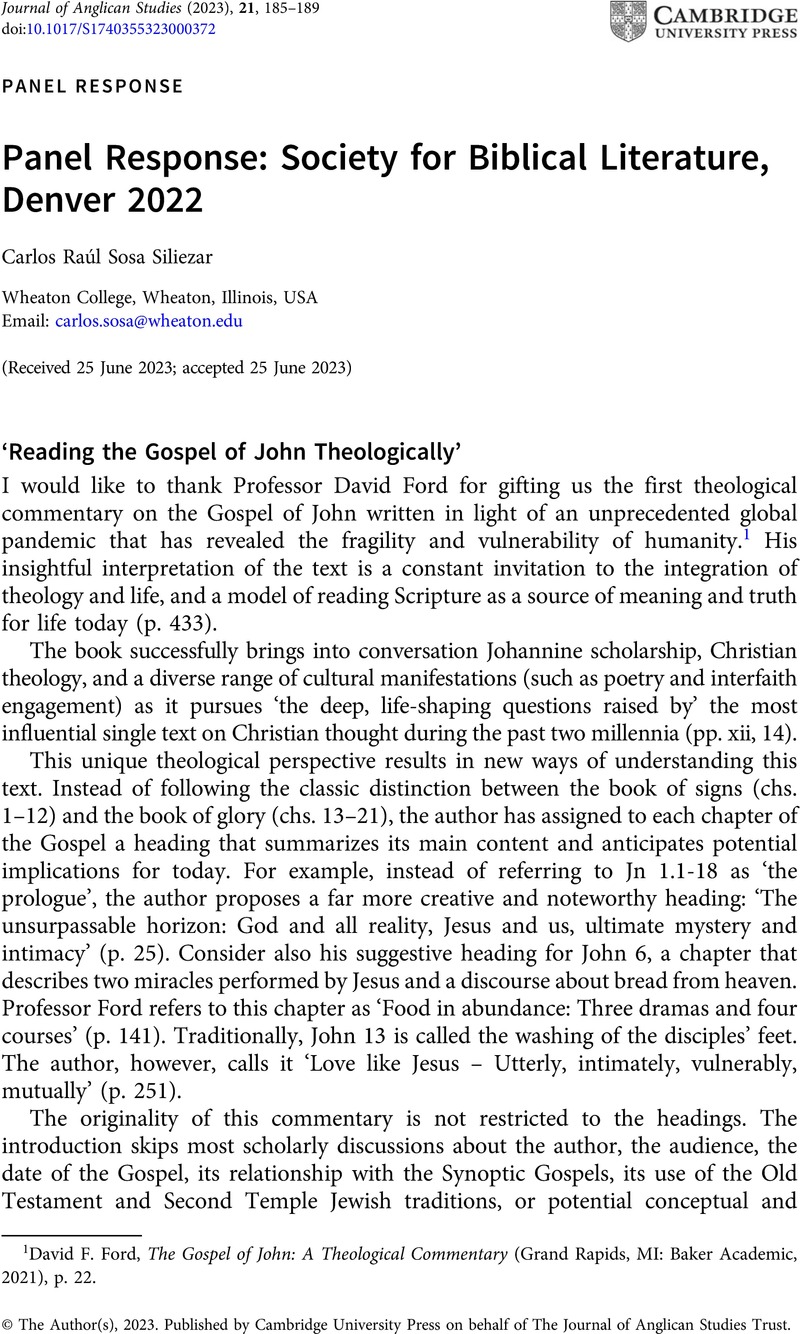No CrossRef data available.
Article contents
Panel Response: Society for Biblical Literature, Denver 2022
Published online by Cambridge University Press: 09 October 2023
Abstract
An abstract is not available for this content so a preview has been provided. Please use the Get access link above for information on how to access this content.

- Type
- Panel Response
- Information
- Copyright
- © The Author(s), 2023. Published by Cambridge University Press on behalf of The Journal of Anglican Studies Trust
References
1 David F. Ford, The Gospel of John: A Theological Commentary (Grand Rapids, MI: Baker Academic, 2021), p. 22.
2 Joel B. Green, Practicing Theological Interpretation: Engaging Biblical Texts for Faith and Formation (Grand Rapids, MI: Baker Academic, 2011), p. 2.



